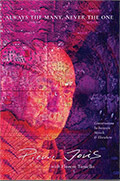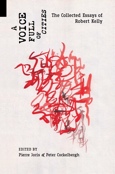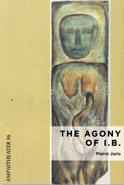Plutocracy Graph & OWS Interview
 [A US plutocracy graph (1979-2007); a map of occupations worldwide; and the occupation movement seen from the perspective of an independent healthcare union official. IB]
[A US plutocracy graph (1979-2007); a map of occupations worldwide; and the occupation movement seen from the perspective of an independent healthcare union official. IB]————————————————————
John Borsos is vice president of the new, independent union, the National Union of Healthcare Workers (NUHW). He is a well-known California labor leader, and an advocate of militant, democratic member driven unions; he was an elected vice-president of the 150,000 member United Healthcare Workers – West, until replaced in Andy Stern’s SEIU 2009 trusteeship. He was also President of the Sacramento Central Labor Council. Here he talks to Cal Winslow about Occupy Wall Street.
John, Occupy Wall Street has come to California in a big way. What is your take on the movement?
“I think it’s great. I think it’s one of those steps outside of the institutional boundaries of the labor movement – by a broader left – that will end up energizing labor.
“I was thinking about this historically, you know there have been certain times when movements have emerged spontaneously, truly grass roots, from the bottom. These are the kind of eruptions you will find if you go back, for instance, to the eighteen nineties and Jacob Coxey’s army of unemployed that marched across the Middle West; or the bonus marchers of the early 1930s, the World War I veterans who gathered in Washington, DC demanding relief, and battled General MacArthur; and, in a more organized way, perhaps, the Poor People’s marches and encampments that Martin Luther King, Jr. led in the 1960s.
“They were all somewhat tied to the labor movement but not in it. But I think that in fact they were harbingers of the more dynamic and militant labor movements that followed.
“I think the great energy of Occupy Wall Street and its manifestations across the country, including here in California, are really exciting. They call attention to the gross class disparities that really exist in this country; they do it in a way that hasn’t been done in a long time.
“Certainly they do this in a much more focused and convincing way than the mushy “fighting for the middle class” that has often been the mantra of the official labor movement in the country.”
What about the movement’s slogan, “We Are the 99%”, how do healthcare workers respond?
“I think this is very important. I look at the concentration of wealth this way – a statistic that is often cited is that the ratio CEO salaries in the United States to that of an average rank-and-file worker in the 1980s was 35-1. Today that ratio is more like 250 to one.
“This plays itself out in the healthcare industry. It’s happening everyplace, but I don’t know if the labor movement has really embraced these facts, certainly not at the collective bargaining table.
“The Occupy Wall Street message has a sharpness that has been missing. I think the way that Occupy Wall Street is really focusing on this one percent is the clearest challenge Wall Street, etc., yet; it has helped to sharpen a much broader public debate.
“I think that it is interesting to watch the Republican candidates, you know Romney Herman Cain in particular, talk about the left “inciting class warfare.” Well, there’s been class war that’s been waged in this country for decades now but finally some of those who’ve been on the receiving end of that are standing up. And they are talking about things that are as close to a class conscious description or characterization of our society as we’ve seen in a long, long time.
I once heard you say Nursing Homes are the “sweatshops of the twenty-first century. And I know there are thousands of hospital workers in California who work at near minimum wages. How is this great income and wealth disparity reflected in your industry?
“It is outrageous. Especially at Kaiser Permanente, the huge hospital chain. You know there’s this overall narrative that the American economy is suffering and, yes, that’s true in some quarters but it’s not true in healthcare and it’s not true in banking. Now banking has been a focus of Occupy Wall Street but in healthcare where we represent people, it’s just the same.
“George Halvorson, the CEO of Kaiser Permanente makes 8 million dollars a year! He has eight pension plans. This company that made $5.7 billion in profits over the past twenty seven months.
“Kaiser’s executives have received huge increases in salaries, bonuses and other compensation. Ben Chu, Regional president for Southern California was paid nearly $2 million last year, plus another half million in bonuses.
“Nevertheless, the company is raising rates for consumers, its millions of ‘members’ who will have to now pay more for their health costs.
“Today, our members – nurses, techs, social workers – face unprecedented take-away demands at the bargaining table – take backs in pensions, in salaries, reductions in staffing.
“This is happening right across the state. We’ve been in a long, public fight at Salinas Valley Memorial Hospital, a public district hospital that pays its CEO close to $800,000 dollars a year he too has eight pensions – still the hospital district is demanding millions in concessions from workers.
“In both of these cases – though this is still a rarity in the labor movement, healthcare workers have been standing up and saying “no” to this.
“I think it’s a parallel thing to what’s happening in Occupy Wall Street, that finally people are saying enough is enough – the disparities are unconscionable and they want to do something about it. They want to stand up and fight back.
“We’ve had strikes in Salinas Valley and now three strikes at Kaiser Permanente. The most recent one was on September 22 when 4,000 NUHW members struck and then another 17,000 members of the California Nurses Association walked out in solidarity with us against Kaiser. By the way, CNA has been great in the occupation movements.
“That strike was the largest strike in California healthcare history and the largest strike in Kaiser’s history and it’s quite the contrast with some other Kaiser unions that are rolling over and doing Kaiser’s bidding in a ‘partnership’ that really subordinates the labor movement to Kaiser’s corporate interests.
“We’re fighting in opposition to that – right now in our fight with these managers against bad faith bargaining and their demands for outrageous concessions from our members.
How do NUHW members feel about the occupations?
“We’re very positive. We’ve been involved. Our members have gone in delegations to Occupy Los Angeles, we’ve been to Occupy Sacramento, and we’ve been to San Francisco and Occupy Oakland. So our members are doing what they can, they’re actively supporting the movement.
“I think it’s because we have the same issues. I know there’s this critique, whether it’s deserved or not – I would say not – about the specificity of the demands and the critique offered by Occupy Wall Street movement.
“But what people are hearing, what they’re talking about is this enormous disparity in wealth, this enormous concentration of capital, all in the hands of the few. That’s certainly what’s happening in healthcare. That’s what we see, and it’s being generalized.
“I think that what this generalization, this debate is doing, for the first time in long time is expressing a working class political economy, one that really hasn’t been pushed forward for a generation or more.
“It begins a critique of corporate capitalism in its twenty-first century manifestation.
“It explains the cuts in public services and other social benefits including healthcare, the deprival of health care to millions, it explains the decline of the public school system, the inability of local government to provide the most basic services – things that communities should expect – libraries, swimming pools, social services. These are the things that are the fabric of what makes a functioning society. Occupy Wall Street explains why this system isn’t working.
“Nobody really has been talking about what this concentration of wealth means on this level but now it’s happening – and it’s a critique of Obama from the Left – and it’s happening in a way that communities all across the country can understand and participate in.”



 “Interglacial Narrows (Poems 1915-2021)” Contra Mundum Press
“Interglacial Narrows (Poems 1915-2021)” Contra Mundum Press “Always the Many, Never the One: Conversations In-between, with Florent Toniello” Contra Mundum Press
“Always the Many, Never the One: Conversations In-between, with Florent Toniello” Contra Mundum Press “Conversations in the Pyrenees”
“Conversations in the Pyrenees” “A Voice Full of Cities: The Collected Essays of Robert Kelly.” Edited by Pierre Joris & Peter Cockelbergh
“A Voice Full of Cities: The Collected Essays of Robert Kelly.” Edited by Pierre Joris & Peter Cockelbergh “An American Suite” (Poems) —Inpatient Press
“An American Suite” (Poems) —Inpatient Press “Arabia (not so) Deserta” : Essays on Maghrebi & Mashreqi Writing & Culture
“Arabia (not so) Deserta” : Essays on Maghrebi & Mashreqi Writing & Culture “Barzakh” (Poems 2000-2012)
“Barzakh” (Poems 2000-2012) “Fox-trails, -tales & -trots”
“Fox-trails, -tales & -trots” “The Agony of I.B.” — A play. Editions PHI & TNL 2016
“The Agony of I.B.” — A play. Editions PHI & TNL 2016 “The Book of U / Le livre des cormorans”
“The Book of U / Le livre des cormorans” “Memory Rose Into Threshold Speech: The Collected Earlier Poetry of Paul Celan”
“Memory Rose Into Threshold Speech: The Collected Earlier Poetry of Paul Celan” “Paul Celan, Microliths They Are, Little Stones”
“Paul Celan, Microliths They Are, Little Stones” “Paul Celan: Breathturn into Timestead-The Collected Later Poetry.” Translated & with commentary by Pierre Joris. Farrar, Straus & Giroux
“Paul Celan: Breathturn into Timestead-The Collected Later Poetry.” Translated & with commentary by Pierre Joris. Farrar, Straus & Giroux
Thanks for posting this, Pierre. The leftwing poetry world needs to know more about unions like NUHW and their vision for democracy and worker-empowerment, and how that entails fights not only against the employer but also against top-down bureaucratic unions like SEIU.
Lucas